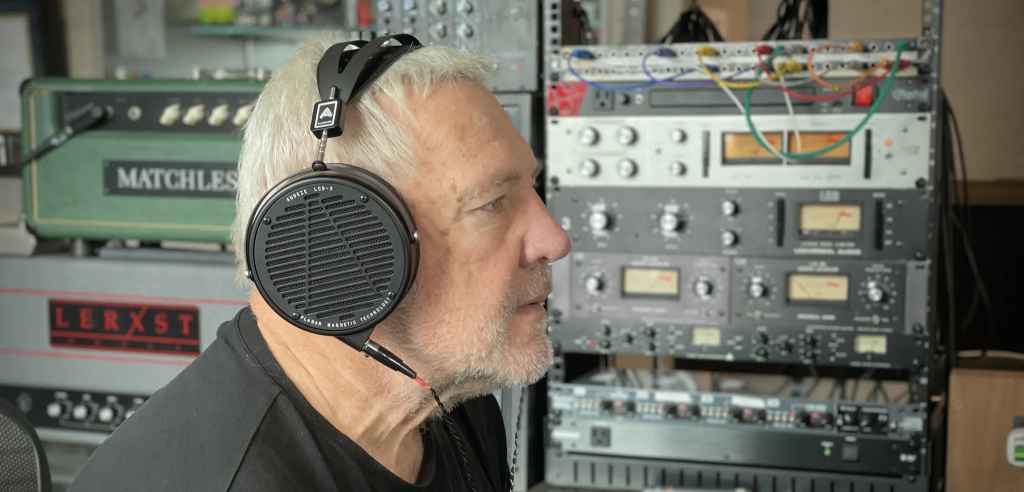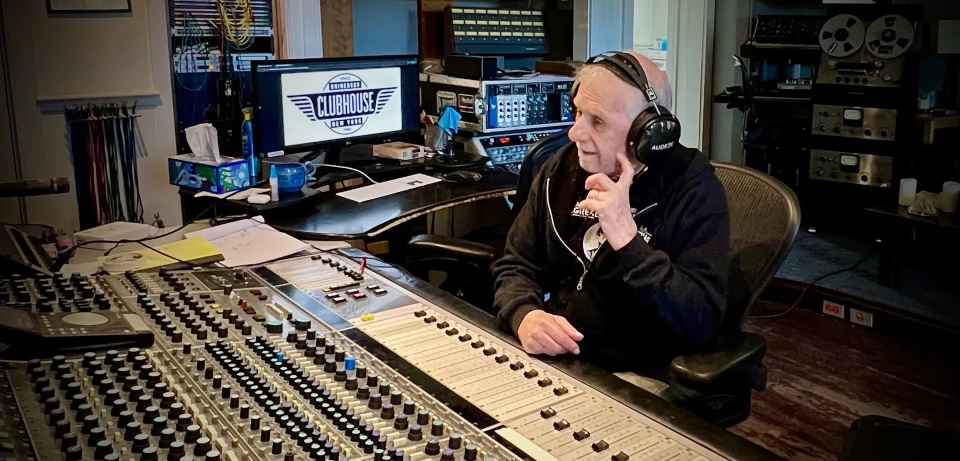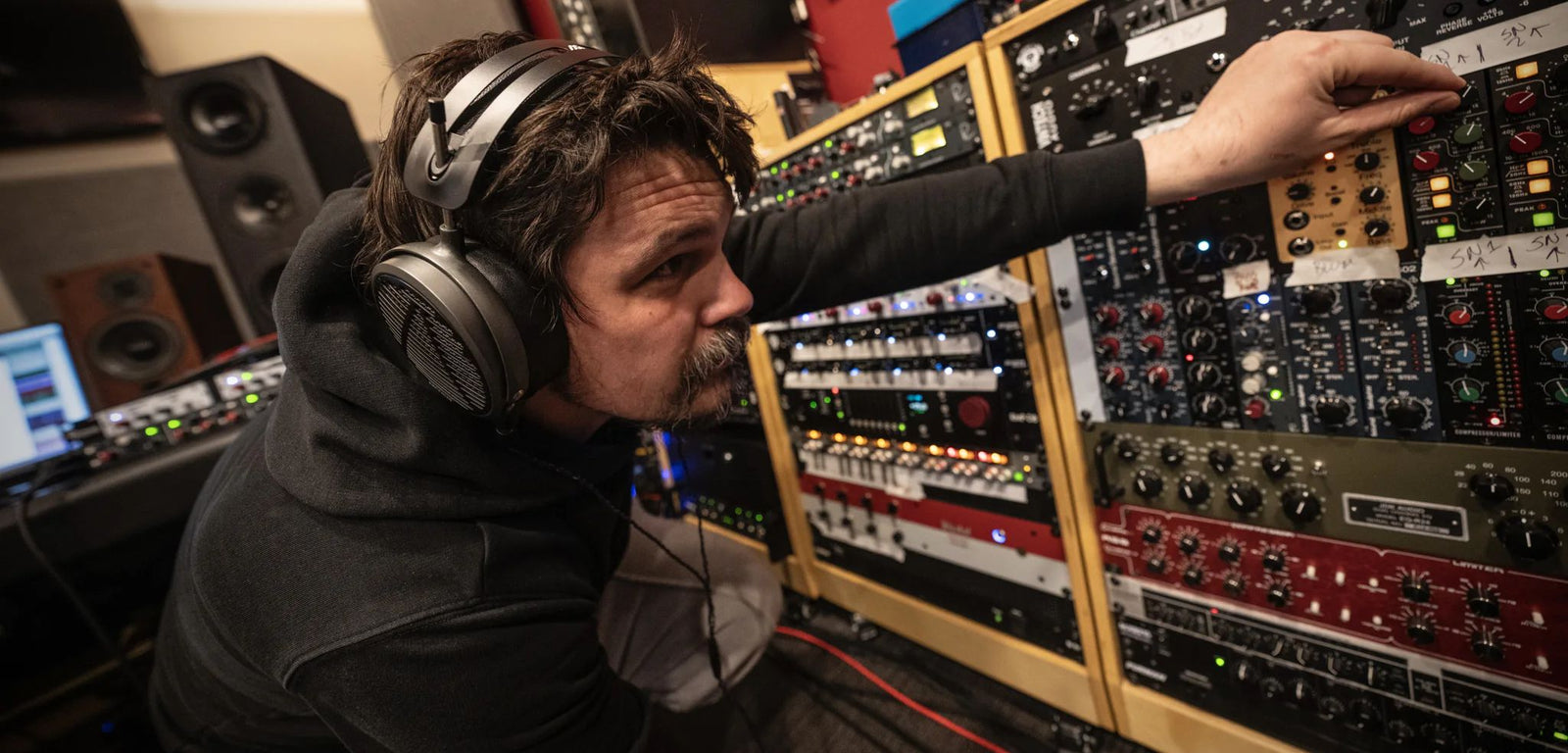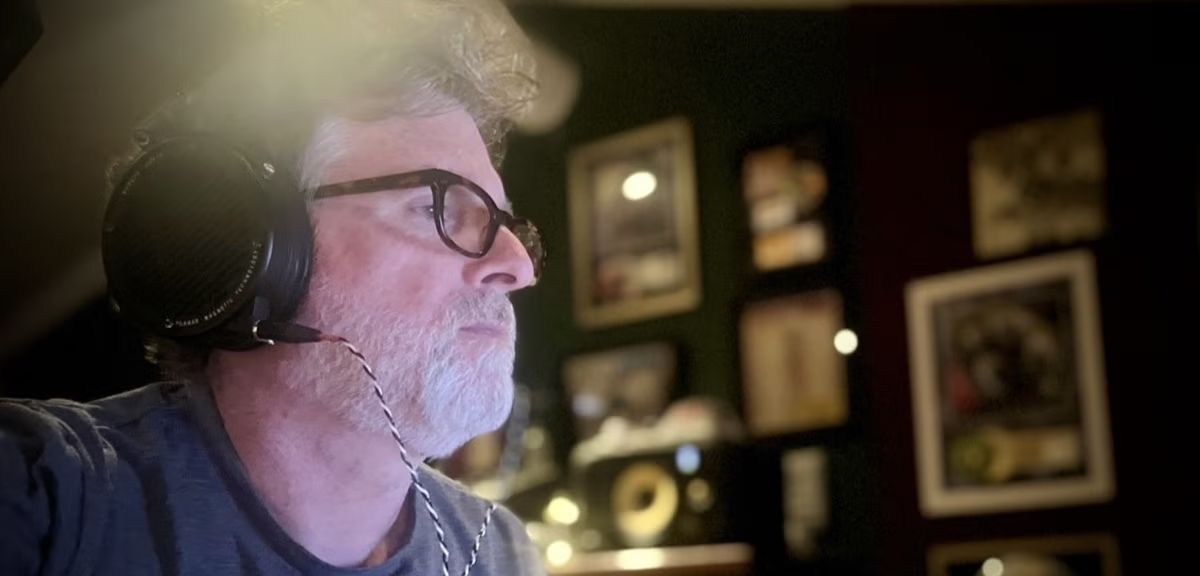
Alex Lifeson is a Canadian musician, best known as the guitarist of the Canadian rock band Rush.

Elliot Scheiner is an engineer and producer. He started working for Phil Ramone at his A&R studios which at that time was considered one of the best studios in the country.

James 'Jimmy T' Meslin is a Grammy winning recording, mix, and live sound engineer based out of Long Island, NY. He's probably best known for his work with prog-metal giants Dream Theater and their affiliated projects.

Dave Way has been mixing longer than he hasn’t. Platinum albums, No. 1 singles, 4 Grammys, 19 Billion streams with names like Michael Jackson, Fiona Apple, P!nk, Xtina Aguilera, Ringo Starr, Iron And Wine, Sheryl Crow, Marshmello, Fall Out Boy, Kesha, Macy Gray, TLC, Victoria Monet, Sons Of Anarchy, Tracy Chapman, Ben Folds, John Doe, MC5, Spice Girls, Weird Al, Paul McCartney, Bobby Brown, Mick Jagger and many, many more.
June 19, 2020
Though not a household name, David Breskin is the visionary behind much vital music of the last forty years. He flies under the radar (at his own preference), but he’s been an invisibly central figure in avant-garde jazz and new music since 1982, when he began working for a small not-for-profit foundation which gives grants to individuals in music, literature, and the visual arts. Along with engineer-extraordinaire Ron Saint Germain and others, David is "to blame" for the release of a panoply of important and ground-breaking music—beginning in the ‘80s and early ‘90s when he produced albums by the likes of Bill Frisell, John Zorn, Ronald Shannon Jackson, Tim Berne, and Joey Baron; and continuing through this past decade in his work with Nels Cline, Mary Halvorson, Kris Davis, Dan Weiss, Craig Taborn, and scores of others.
Audeze is extremely proud to be involved in the process that helps these releases be the best that they can be. We'll be featuring interviews with Ron and some of the artists db (as he's called by all who know him) has worked with in future posts, so keep your eyes out for those!

Can you pick out any favorites from your work that you're particularly proud of?
That’s like trying to pick among your kids. On a purely sonic and conceptual level some albums of real reach and ambition that I’ve been lucky enough to produce or co-produce would include Nels Cline’s Lovers, Dan Weiss’ Starebaby, Kris Davis’ Diatom Ribbons, Ingrid Laubrock’s Contemporary Chaos Practices, Ben Goldberg’s Orphic Machine, and Mark Dresser’s Ain’t Nothing But A Cyber Coup & You. So you see I have a hard time choosing. Mary Halvorson should also be on that list. There’s something about Mary.
What's the best place for those new to your work to become familiar with what you do?
Well I try to keep my website decently up to date, though I sometimes have the inclination to downdate rather than update. It’s a good place to at least see and hear what records I’ve had a hand in, going back to 1982, and also it’s an archive of my published writing—books, magazine journalism, interviews, poems-by-the-slice, collaborations with artists—as well as some photographs.
How would you define your main role on most of the projects you work on?
I’m tempted to say “Minister Without Portfolio” but that would be cheeky. Every artist and album is different. Sometimes less is more and sometimes more is more. I try to work with two mottos: Best Idea Wins and Make The Punishment Fit The Crime. Oh, I guess I should add a third, a shorthand Hippocratic Oath: First Do No Harm. I’m basically trying to be a co-pilot, occasionally a protagonist or provocateur. Because I am a non-musician and have more of a background in narrative prose and poetry, and also the visual arts, I am usually trying to see the relationships of the parts to the whole, and how things fit together. It’s my job to help the artist make the album its best self, and not to impose any particular aesthetic. If I do have an aesthetic I guess my leading principle would be Asymmetical Equilibrium. Maybe that’s what my next business card should say. But it’s the artist who should be the auteur, not the producer; especially in this kind of free-range, non-pop music field I plow. But sometimes a producer can help the artist discover their inner auteur and make manifest something previously only inchoate. I guess one unusual role I sometimes (but not always) play is to create the album design—the look and feel of the thing, the visual language. I try to find the unified whole and am always looking for the 1 + 1 = 3.
How did you get started in your area of the business?
Happenstance. A few years after Jon Landau fell in love with Bruce Springsteen at a 1974 show at Harvard Square Theater, I fell in love with Ronald Shannon Jackson’s drumming when he was playing with Cecil Taylor and Ornette Coleman’s Prime Time. And then I heard his composing and saw him play (with Blood Ulmer) in the summer of 1979 at the Public Theater in NYC, while I was interning at the Village Voice before my senior year in college, being a “baby music critic,” writing Riffs for Robert Christgau and sucking up the scene. Landau famously declared that Springsteen was the future of rock ‘n’ roll. I thought Shannon was the future of jazz. Landau’s winning bet was a smidge more lucrative, but my marginal wager found me—a few years later—lugging Vernon Reid’s seven guitars and Shannon’s massive Sonor kit around Europe during a Decoding Society tour and producing Mandance and Barbeque Dog. I had exactly zero idea what I was doing and the ignorant confidence of a young autodidact. But I knew what was good. Why should I care if somebody told me it wasn’t? I knew from my own reviews how radically subjective the whole thing was, and still is.
Can you briefly describe a moment of frustration from your past work, and what you may have done to overcome the obstacles? Would you approach it differently now?
The process of making art is filled with obstacles. In some ways it is essentially about the obstacles. If there’s no resistance, there’s no friction and without friction there’s no heat and often no light. This goes whether someone is writing a poem or directing a high-budget Hollywood film. Some processes are obviously more collaborative than others, but I view all works of art as acts of collaboration. Even a solitary painter in a studio is collaborating with all the art she’s seen and felt for her entire life until that moment, and is in conversation with the work of the past and the present, even (and especially) what she might be trying to “throw off” or “work against.” I would also push back against the idea of a “moment of frustration.” If it’s only for a moment, it ain’t worth being frustrated about. The real obstacles are the ones you can learn from, the nasty cul-de-sacs and the back-breakers. We’re all on the chain gang, looking to rob our unseen keepers of the keys.
Is there any gear you find yourself turning to most when working on a project?
I have been grateful to have had a pair of ProAc Studio 100s for the last dozen years. I use these weighty little bookshelf speakers as my reference monitors. I am not looking for gigantic, crazy-expensive speakers. I am looking for “real world” speakers. While there is no absolute truth in sound—only gradations and shavings of the truth—I trust these babies to tell me a robust version of the truth and they are enormously helpful. Most important, I’ve learned that if something sounds good / right / true on the ProAcs it will sound good on anything else, even the crappiest earbuds. (I mean, as good as music can sound on crap earbuds.) Music pours like water out of the ProAc Studio 100s.
Other than that, I would say the single best piece of audio gear I have ever found is Ron Saint Germain. When I first began using him—about thirty-eight years ago—he was not such a vintage piece of equipment. But even given his manufacturing date, he’s shockingly still under warranty. His instructions are complicated, but are in English and come out of the box, never in the box. He bends under difficult and demanding circumstances, but never breaks. To get working he needs caffeine, some calories, and not much sleep. I’ve been blessed to be able to work with some wonderfully skillful engineers, but there is only one Saint. He’s like a Swiss Army Knife ready to pry, carve, cut, screw, and stab any damn sonic problem presented. Assembly not required. Opinions included FREE ...but often expensive.
Do you have any words of wisdom for people who might aspire to get where you are in their own careers?
Make it up as you go along and always work with people smarter and more knowledgeable than you are.
How long have you been working with headphones, and what inspired you to start including them in your workflow?
I began working as a radio disc jockey when I was fourteen years old. My high school had a 10-watt FM stereo station, WNTH. I did jazz shows and play-by-play of basketball and football games, so headphones have been part of my “professional” life since before my voice changed.
Once I was really working in music and not just listening to it, in the 1980s, I had a pair of Grados I adored and swore by. When those died, I was bereft and never found anything I liked as much. After that, I dated around. I was promiscuous. I didn’t care. And for a couple decades, I was serially monogamous but unsatisfied. And then shazzam, a wise man gave me a pair of Audeze EL-8s as a gift, and what a gift. I could travel with them (as I did much in the pre COVID-19 days—since I live on the Left Coast but +90% of my work is on the Least Coast) and use them without worry and with supernal results on planes and trains, and in hotel rooms and studios. I stopped accepting whatever the studios offered me. I came to trust these cans, just as I trust the ProAcs. Trust means almost everything, especially when mixing.
A coda, because this is a story about music: since cans are not crucial to me for tracking, I thought I’d offer my EL-8s to Kris Davis to try while we were tracking Diatom Ribbons in December of 2018. Musicians don’t even bother to complain about studio cans anymore—they are a necessary evil, a fact of recording life. Most tend to be overbright, or thin, or harsh, and if they image at all they image like a Jackson Pollock splatter painting. After many hours of intense listening and playing, they can be even less than a necessary evil and more like a hindrance. (I don’t know any musicians who would choose to track in cans if there was a better alternative.) A funny thing happened when I gave Kris the EL-8s. She didn’t say anything. She started playing. She smiled. And she just... did not take them off. She’s a polite woman, but she didn’t even offer to give them back. And the whole session went that way. Next time I was in the studio, I made the same offer to the pianist Sylvie Courvoisier. The EL-8s went on and didn’t come off, except when it was time to come into the control room or break for a meal. Next up, Ingrid Laubrock. Same deal. Most recently with the drummer Ches Smith, same. On, not off—and this time for a truly daunting three-day sesh where he was playing with three Haitain master drummers, plus piano, plus double bass, plus alto sax: density cubed, you might say. I don’t even ask anymore if they are being enjoyed. I’m slowly catching on.
db, 22 May 2020, San Francisco
Ron St. Germain, Ingrid Laubrock and db during a remote mixing session:
